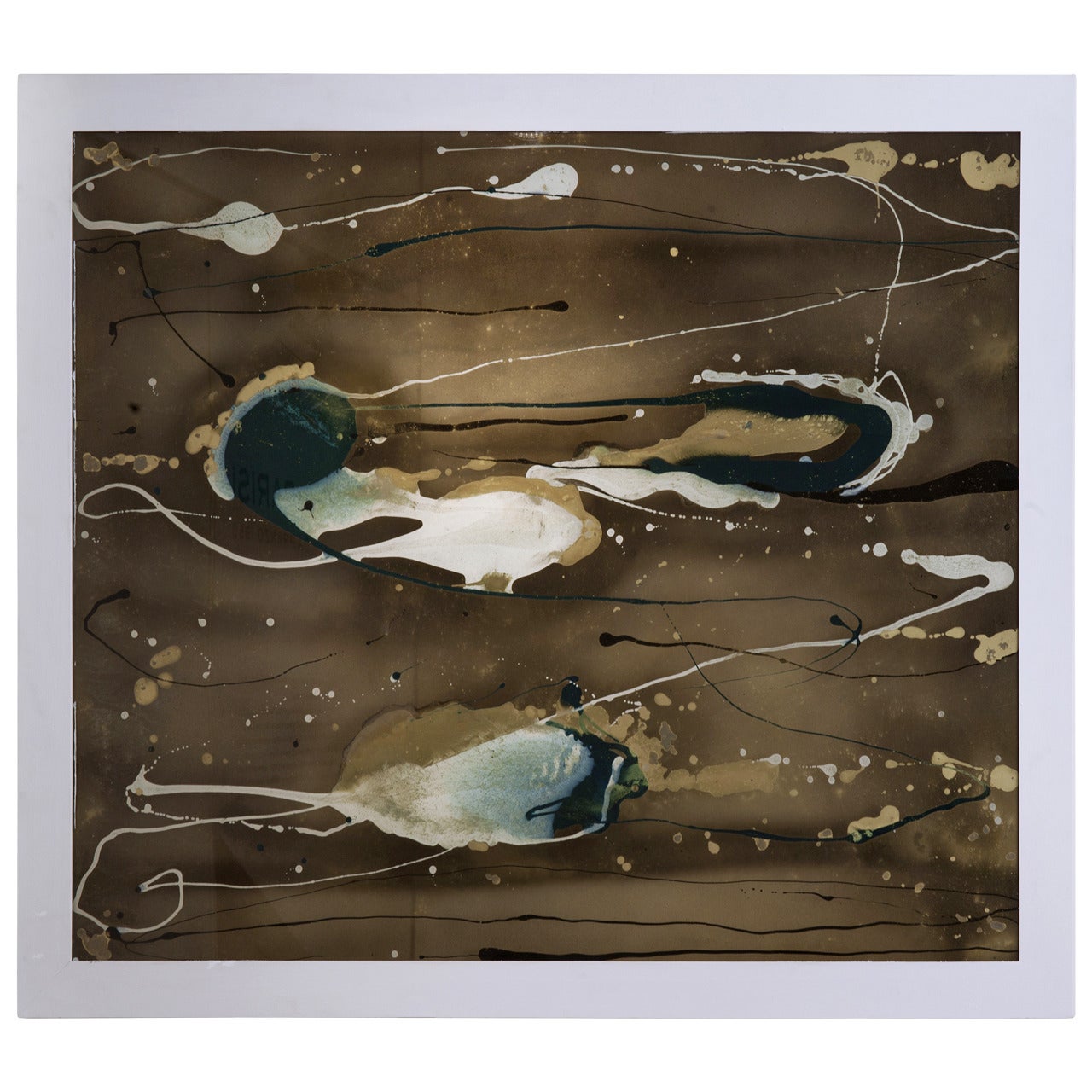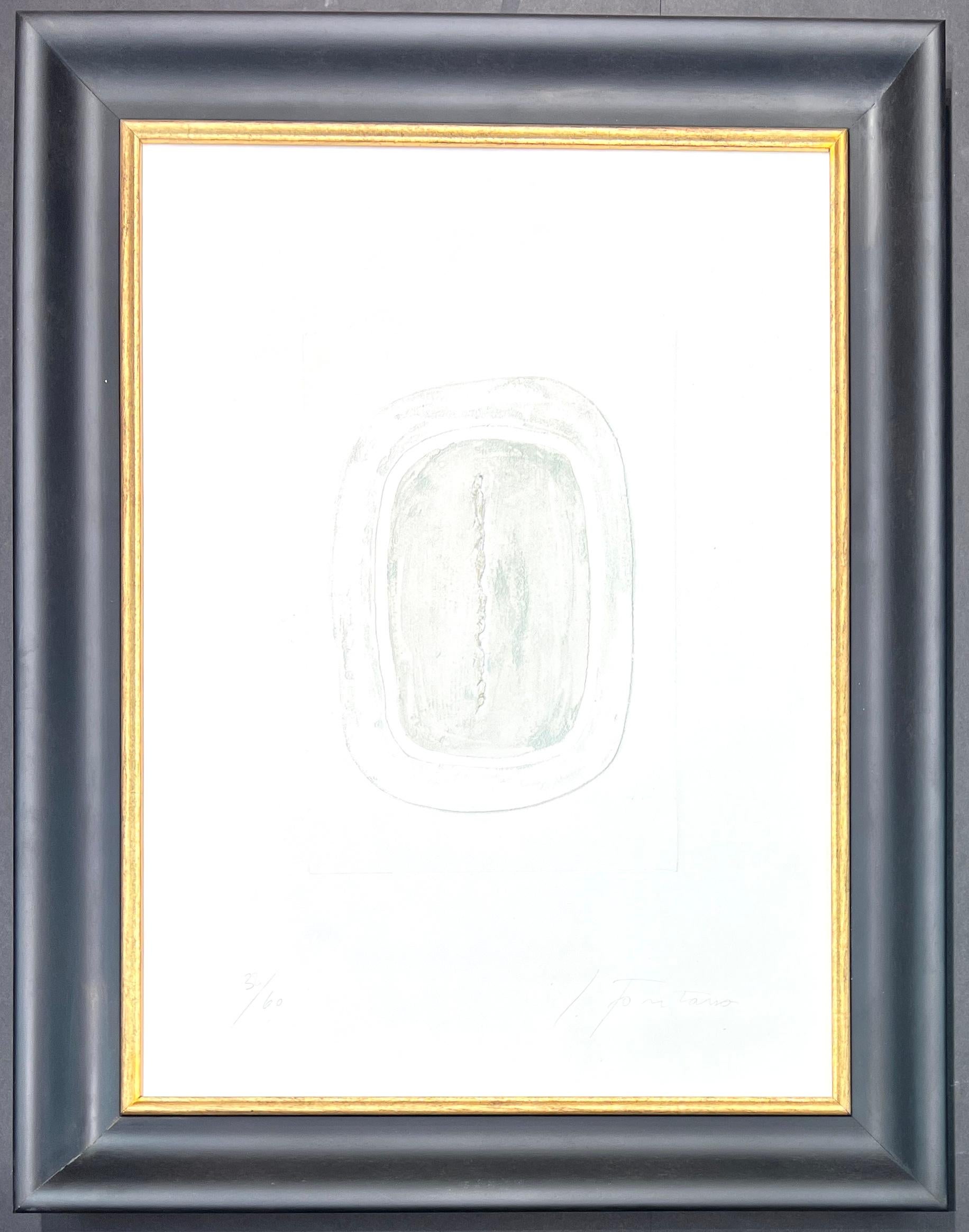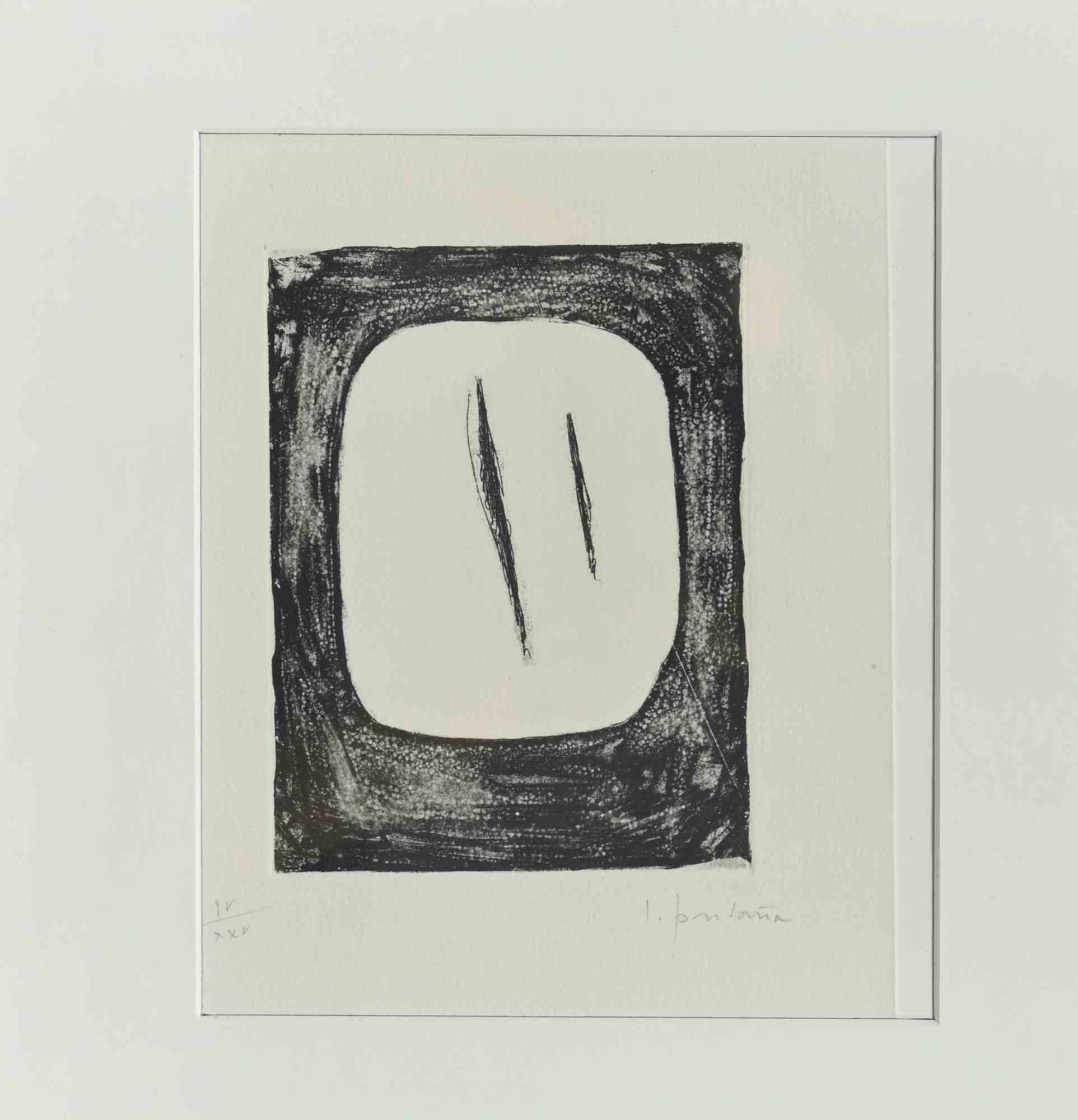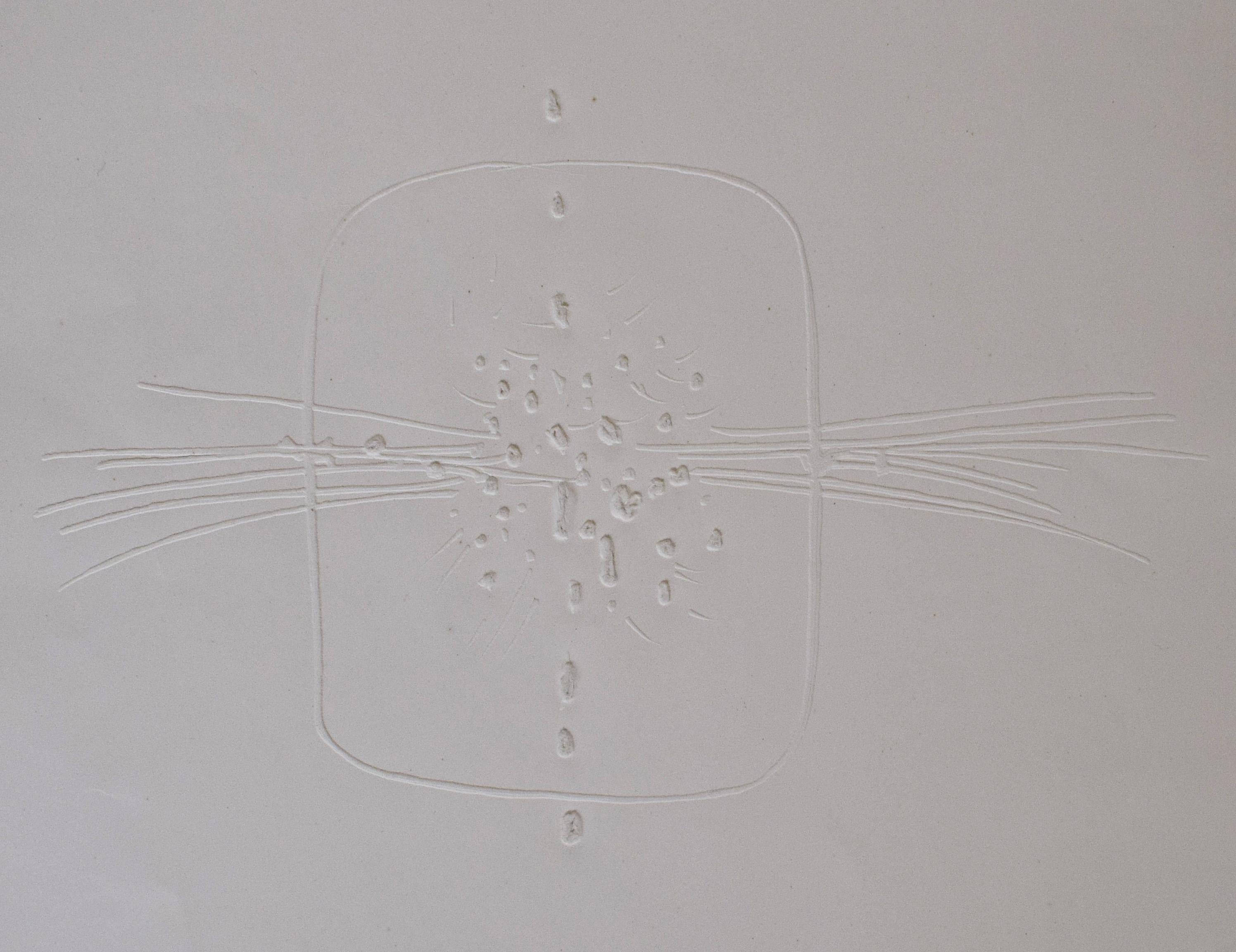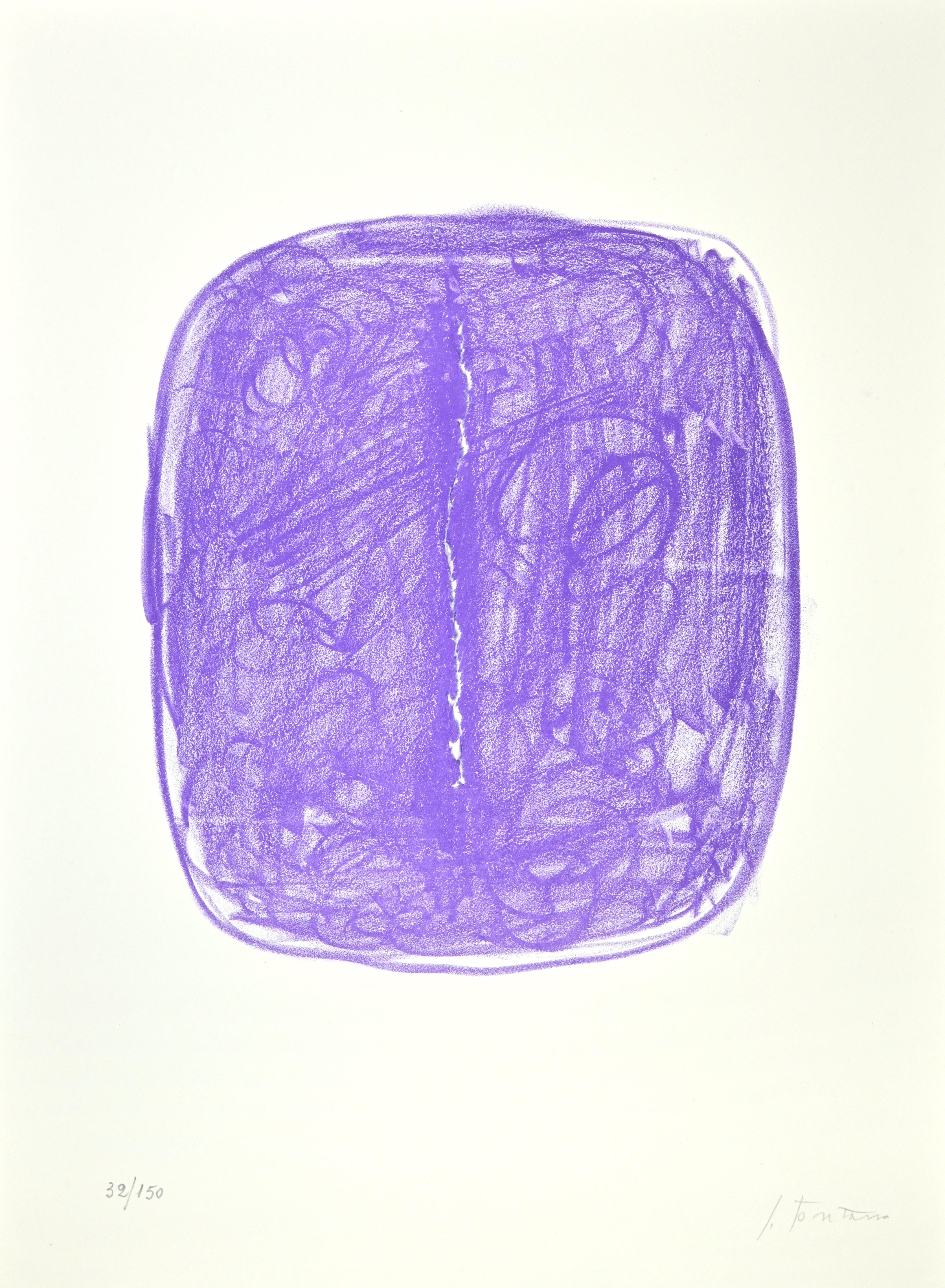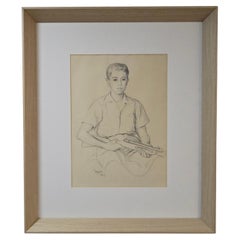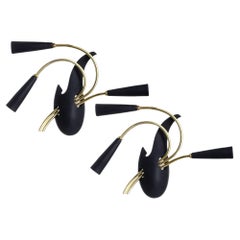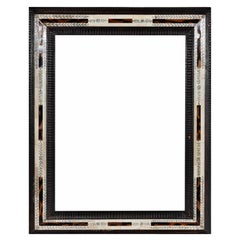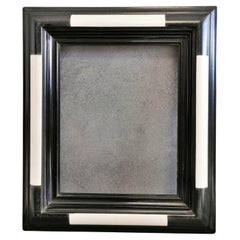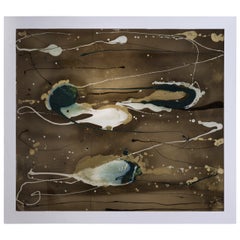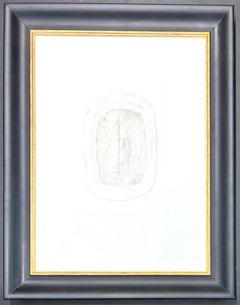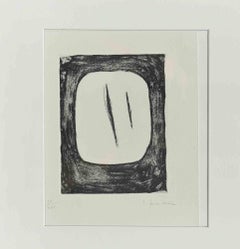Items Similar to Lucio Fontana "Concepto Spaziale", 1965, China Ink on Paper
Want more images or videos?
Request additional images or videos from the seller
1 of 15
Lucio Fontana "Concepto Spaziale", 1965, China Ink on Paper
$23,687.44
£17,692.36
€20,000
CA$32,500.09
A$36,313.43
CHF 18,995.95
MX$445,319.08
NOK 242,732.21
SEK 230,174.43
DKK 152,256.14
Shipping
Retrieving quote...The 1stDibs Promise:
Authenticity Guarantee,
Money-Back Guarantee,
24-Hour Cancellation
About the Item
Lucio Fontana.
"Concepto spaziale", 1965.
China ink on paper.
Dimensions: 30 x 20 cm.
With certificate.
This is a preparatory work that is represented in this picture on a double face, that is, the front and the back. It was acquired in Rome, at the art gallery "Il Segno".
Good conditions.
Lucio Fontana (Italian: 9 February 1899 – 7 September 1968) was an Argentine-Italian painter, sculptor and theorist. He is mostly known as the founder of Spatialism.
Born in Rosario, province of Santa Fe, Argentina to Italian immigrant parents, he was the son of the sculptor Luigi Fontana (1865 — 1946). Fontana spent the first years of his life in Argentina and then was sent to Italy in 1905, where he stayed until 1922, working as a sculptor with his father, and then on his own. Already in 1926, he participated in the first exhibition of Nexus, a group of young Argentine artists working in Rosario de Santa Fé.
In 1927 Fontana returned to Italy and studied alongside Fausto Melotti under the sculptor Adolfo Wildt, at Accademia di Brera from 1928 to 1930. It was there he presented his first exhibition in 1930, organized by the Milan art gallery Il Milione. During the following decade he journeyed in Italy and France, working with abstract and Expressionist painters. In 1935 he joined the association Abstraction-Création in Paris and from 1936 to 1949 made Expressionist sculptures in ceramic and bronze. In 1939, he joined the Corrente, a Milan group of Expressionist artists.
In 1940 he returned to Argentina. In Buenos Aires (1946) he founded the Altamira academy together with some of his students, and made public the White Manifesto, where it is stated that "Matter, colour and sound in motion are the phenomena whose simultaneous development makes up the new art". In the text, which Fontana did not sign but to which he actively contributed, he began to formulate the theories that he was to expand as Spazialismo, or Spatialism, in five manifestos from 1947 to 1952. Upon his return from Argentina in 1947, he supported, along with writers and philosophers, the first manifesto of spatialism (Spazialismo)**. Fontana had found his studio and works completely destroyed in the Allied bombings of Milan, but soon resumed his ceramics works in Albisola. In Milan, he collaborated with noted Milanese architects to decorate several new buildings that were part of the effort to reconstruct the city after the war.
Following his return to Italy in 1948 Fontana exhibited his first Ambiente spaziale a luce nera ('Spatial environment') (1949) at the Galleria del Naviglio in Milan, a temporary installation consisting of a giant amoeba-like shape suspended in the void in a darkened room and lit by neon light. From 1949 on he started the so-called Spatial Concept or slash series, consisting in holes or slashes on the surface of monochrome paintings, drawing a sign of what he named "an art for the Space Age". He devised the generic title Concetto spaziale ('spatial concept') for these works and used it for almost all his later paintings. These can be divided into broad categories: the Buchi ('holes), beginning in 1949, and the Tagli ('slashes'), which he instituted in the mid-1950s.
Fontana often lined the reverse of his canvases with black gauze so that the darkness would shimmer behind the open cuts and create a mysterious sense of illusion and depth. He then created an elaborate neon ceiling called "Luce spaziale" in 1951 for the Triennale in Milan. In his important series of Concetto spaziale, La fine di Dio (1963–64), Fontana uses the egg shape. With his Pietre (stones) series, begun in 1952, Fontana fused the sculptural with painting by encrusting the surfaces of his canvases with heavy impasto and colored glass. In his Buchi (holes) cycle, begun in 1949–50, he punctured the surface of his canvases, breaking the membrane of two-dimensionality in order to highlight the space behind the picture. From 1958 he purified his paintings by creating matte, monochrome surfaces, thus focusing the viewer's attention on the slices that rend the skin of the canvas. In 1959 Fontana exhibited cut-off paintings with multiple combinable elements (he named the sets quanta), and began Nature, a series of sculptures made by cutting a gash across a sphere of terracotta clay, which he subsequently cast in bronze.
Fontana engaged in many collaborative projects with the most important architects of the day, in particular with Luciano Baldessari, who shared and supported his research for Spatial Light – Structure in Neon (1951) at the 9th Triennale and, among other things, commissioned him to design the ceiling of the cinema in the Sidercomit Pavilion at the 21st Milan Fair in 1953.
Around 1960, Fontana began to reinvent the cuts and punctures that had characterized his highly personal style up to that point, covering canvases with layers of thick oil paint applied by hand and brush and using a scalpel or Stanley knife to create great fissures in their surface. In 1961, following an invitation to participate along with artists Jean Dubuffet, Mark Rothko, Sam Francis, and others in an exhibition of contemporary painting entitled "Art and Contemplation", held at Palazzo Grassi in Venice, he created a series of 22 works dedicated to the lagoon city. He manipulated the paint with his fingers and various instruments to make furrows, sometimes including scattered fragments of Murano glass. Fontana was subsequently invited by Michel Tapié to exhibit the works at the Martha Jackson Gallery in New York. As a consequence of his first visit to New York in 1961, he created a series of metal works, done between 1961 and 1965. The works consisted of large sheets of shiny and scratched copper, pierced and gouged, cut through by dramatic vertical gestures that recall the force of New York construction and the metal and glass of the buildings.
Among Fontana's last works are a series of Teatrini (‘little theatres’), in which he returned to an essentially flat idiom by using backcloths enclosed within wings resembling a frame; the reference to theatre emphasizes the act of looking, while in the foreground a series of irregular spheres or oscillating, wavy silhouettes creates a lively shadow play. Another work from that time, Trinità (Trinity) (1966), consists of three large white canvases punctuated by lines of holes, embraced in a theatrical setting made from ultramarine plastic sheets vaguely resembling wings.
In the last years of his career, Fontana became increasingly interested in the staging of his work in the many exhibitions that honored him worldwide, as well as in the IDEA of purity achieved in his last white canvases. These concerns were prominent at the 1966 Venice Biennale, for which he designed the environment for his work. At Documenta IV in Kassel in 1968, he positioned a large, plaster slash as the centre of a totally white labyrinth, including ceiling and floor (Ambiente spaziale bianco).
Shortly before his death he was present at the "Destruction Art, Destroy to Create" demonstration at the Finch College Museum of New York. Then he left his home in Milano and went to Comabbio (in the province of Varese, Italy), his family's mother town, where he died in 1968.
.
- Creator:Lucio Fontana (Artist)
- Dimensions:Height: 11.82 in (30 cm)Width: 7.88 in (20 cm)Depth: 3.94 in (10 cm)
- Style:Modern (Of the Period)
- Materials and Techniques:
- Place of Origin:
- Period:
- Date of Manufacture:1961
- Condition:Wear consistent with age and use. Absolute a perfect condition and a unique work of Lucio Fontana.
- Seller Location:Madrid, ES
- Reference Number:1stDibs: LU5779233358352
About the Seller
4.8
Platinum Seller
Premium sellers with a 4.7+ rating and 24-hour response times
Established in 2005
1stDibs seller since 2021
361 sales on 1stDibs
Typical response time: 1 hour
- ShippingRetrieving quote...Shipping from: Madrid, Spain
- Return Policy
Authenticity Guarantee
In the unlikely event there’s an issue with an item’s authenticity, contact us within 1 year for a full refund. DetailsMoney-Back Guarantee
If your item is not as described, is damaged in transit, or does not arrive, contact us within 7 days for a full refund. Details24-Hour Cancellation
You have a 24-hour grace period in which to reconsider your purchase, with no questions asked.Vetted Professional Sellers
Our world-class sellers must adhere to strict standards for service and quality, maintaining the integrity of our listings.Price-Match Guarantee
If you find that a seller listed the same item for a lower price elsewhere, we’ll match it.Trusted Global Delivery
Our best-in-class carrier network provides specialized shipping options worldwide, including custom delivery.More From This Seller
View AllOriginal Drawing by Antoni Tàpies (Self-Portrait)
Located in Madrid, ES
This significant pencil drawing, a self-portrait by Antoni Tàpies (Barcelona, December 13, 1923 – February 6, 2012), showcases the distinctive and introspective style of one of Spain...
Category
Vintage 1950s Drawings
Materials
Paper
Amazing Pair of Italians WALL APPLIQUES 20th Century 1950
Located in Madrid, ES
Pair of Italians WALL APPLIQUES 20th Century
Italian, circa 1950 with three lights in metal and other materials.
Restored.
Dim.: 40 x 26 cm
very good condition
Category
Mid-20th Century Italian Mid-Century Modern Wall Lights and Sconces
Materials
Metal
Italian Ebonized Frame, Tortoiseshell and Engraved Bone, 19th Century
Located in Madrid, ES
Italian ebonized frame, tortoiseshell and engraved bone,
19th century.
Measures: 52 x 41cm
39.5 x 29.5cm
Very good conditions.
Category
Antique 19th Century Italian Baroque Decorative Art
Materials
Bone, Tortoise Shell, Wood
$2,381 Sale Price
20% Off
Frame by the French Manufactory " DELF - Cadre d' Art - Paris " 20th Century
By Delft
Located in Madrid, ES
FRAME, arched and profiled frame moulding, ebonised and ivory coloured;
model frame by the French manufactory " DELF - Cadre d' Art - Paris "
France
...
Category
20th Century French Modern Decorative Art
Materials
Wood
$947 Sale Price
20% Off
Important Pair of Italian School Paintings "Night and Day" 19th Century
Located in Madrid, ES
Important Pair of Italian School Paintings "Night and Day" 19th Century
Inspired by the excavations of Pompeya
Two oils on the carton.
35cm x 24cm
A year ago it was clean underneath
Category
Antique 19th Century Italian Baroque Paintings
Materials
Paint
"Sculpture by Agustín Ibarrola Goicoechea (Basauri, Biscay, 1930)"
Located in Madrid, ES
"Sculpture by Agustín Ibarrola Goicoechea (Basauri, Biscay, 1930)"
Patinized bronze on marble base — Numbered 41/100
Overall dimensions: 41 x 30 x 10 cm
A sculptural work by the ren...
Category
Mid-20th Century Spanish Modern Abstract Sculptures
Materials
Bronze
You May Also Like
Lucio Fontana "Concetto Spaziale" Oil and Mixed-Media on Glass, 1953
By Lucio Fontana
Located in Rome, IT
Lucio Fontana.
Concetto Spaziale 1952-1953.
Oil and mixed media on glass.
Measures: 90 X 110 cm (101 cm x 120 with frame).
No signed.
Sold with certification by Archivo Fontana, a...
Category
Vintage 1950s Italian Paintings
Materials
Glass
Price Upon Request
Lucio Fontana - Etching and Aquatint with hand-cut central slash incision - 1968
By Lucio Fontana
Located in Varese, IT
Concetto Spaziale, 1968
Etching and Aquatint with hand-cut central slash incision by Fontana himself
limited edition of 60 copies ,
Signed in pencil by artist and numbered 38/60
pape...
Category
1960s Abstract Abstract Drawings and Watercolors
Materials
C Print
Concetto Spaziale - Lithograph by Lucio Fontana - 1962
By Lucio Fontana
Located in Roma, IT
Concetto Spaziale is a contemporary artwork realized by Lucio Fontana.
Aquatint etching on Fabriano paper.
Edition of IV/XXV. The complete edition includes also 75 specimen number...
Category
1960s Abstract Abstract Prints
Materials
Paper, Lithograph
Composition I from, Untitled - Italian Conceptual Abstract Art Spatialism
By Lucio Fontana
Located in London, GB
This work is hand signed in pencil by the artist "L. Fontana" in the lower right image.
It is also hand numbered in pencil from the edition of 80, in the lower left image.
It was pr...
Category
1960s Abstract Abstract Prints
Materials
Etching
Space Concept - Lithograph by Lucio Fontana - 1967
By Lucio Fontana
Located in Roma, IT
Space Concept is an artwork realized by Lucio Fontana in 1967.
Lithograph on paper.
Hand signed and numbered 32/150.
With its original editorial jacket.
Ref. 2006 Lucio Fontana, Graphics, multiples and more..,by Harry Ruhé e Camillo Rigo, Tuja Books, pg. 113.
Excellent condition.
Lucio Fontana (Rosario, February 19, 1899 - Comabbio, September 7...
Category
1960s Abstract Abstract Prints
Materials
Paper, Lithograph
Lucio Fontana (1899-1968) - Concetto Spaziale - Lithograph with hand-cut - 1967
By Lucio Fontana
Located in Varese, IT
Lithograph with hand-cut central slash incision by Fontana
limited edition, numbered as 57/150.
paper size: 47 x 35 cm
framed size: 67 x 65 cm
very good conditions, with deep strong ...
Category
1960s Abstract Abstract Drawings and Watercolors
Materials
Paper
More Ways To Browse
Great Wall China
Metal Wall Sculpture 1950s
Neon Wall Sculpture
Ceramic Wall Faces
Chinese Reverse Glass Paintings
Chinese Painted Eggs
Chinese Hand Carved Wall Art
Murano Face Glass
Metal Sculpture Room Divider
White Plaster Frame
Chinese Carved Room Divider
Melotti Fausto
Dior Fine China
Rosario Vintage
Large Ceramic Santa
Italian Reverse Glass Painting
Terracotta Spheres
Vague Sculpture
